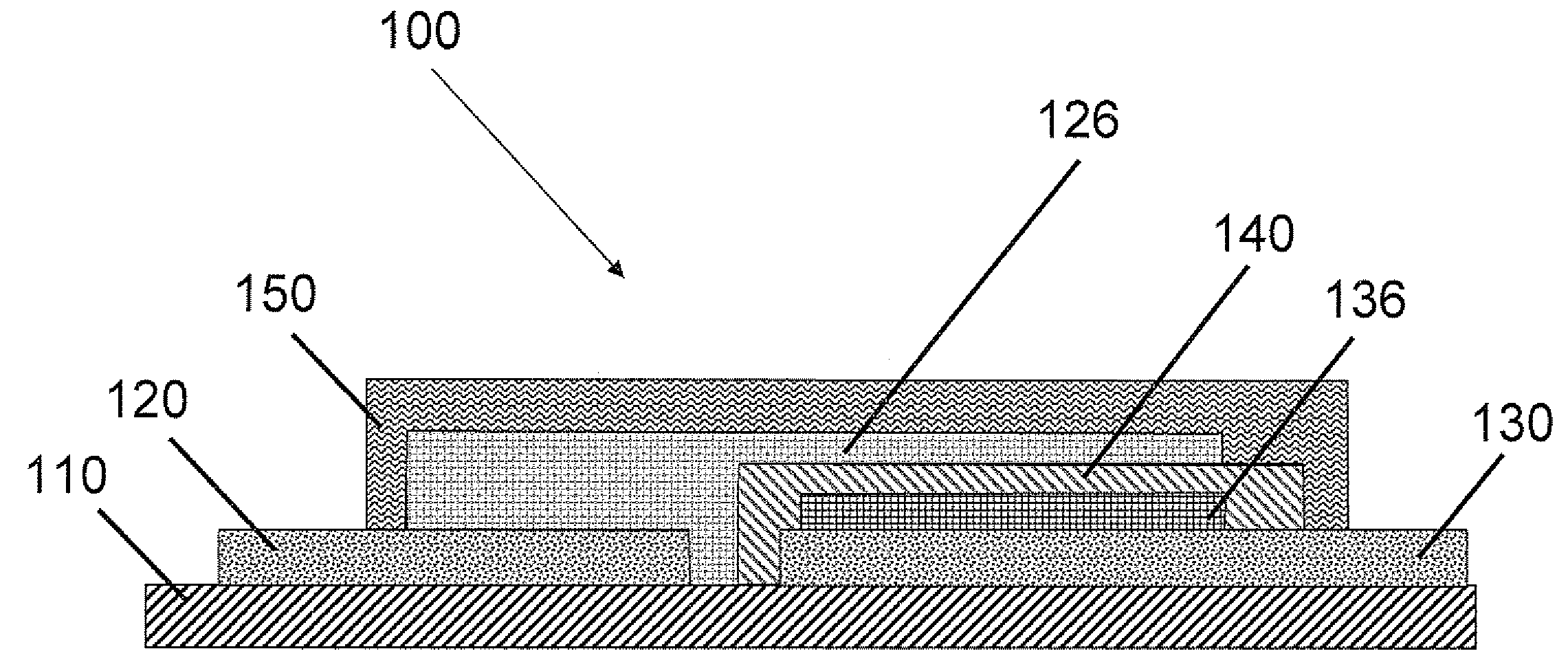Barrier layer for thin film battery
a barrier layer and thin film battery technology, applied in the direction of cell components, flat cell grouping, sustainable manufacturing/processing, etc., can solve the problems of detrimentally affecting the performance of thin film batteries, unsafe conditions, etc., to increase the achievable energy and power density, prolong the battery life, and enhance the efficiency of thin film battery packaging
- Summary
- Abstract
- Description
- Claims
- Application Information
AI Technical Summary
Benefits of technology
Problems solved by technology
Method used
Image
Examples
examples
[0036]The invention will be further clarified by the following example. Again with reference to FIG. 2, a method of forming a thin film battery 100 comprising a barrier layer includes providing a substrate 110 having formed thereon separate patterned layers of indium tin oxide, which serve as both the anode and cathode current collectors 120, 130.
[0037]A cathode layer 136 is formed over the cathode current collector 130. The cathode layer 136, which may be formed by sputtering a pressed powder target of cathode material through a suitably patterned mask, may comprise LiCoO2 or, alternatively, LiMnO2, LiFeO2, LiNiO2 or V2O5, for example. In an RF magnetron sputter tool, exemplary sputtering conditions for forming a LiCoO2 cathode layer include a power of about 50 W, a chamber pressure of about 3 mTorr (e.g., 0.5 to 5 mTorr), and a sputter time of 1-3 hours in 100% pure argon. During sputtering of the target, the substrate can be maintained at a temperature of about −15-120° C. In ord...
PUM
| Property | Measurement | Unit |
|---|---|---|
| thickness | aaaaa | aaaaa |
| thickness | aaaaa | aaaaa |
| total thickness | aaaaa | aaaaa |
Abstract
Description
Claims
Application Information
 Login to View More
Login to View More - R&D
- Intellectual Property
- Life Sciences
- Materials
- Tech Scout
- Unparalleled Data Quality
- Higher Quality Content
- 60% Fewer Hallucinations
Browse by: Latest US Patents, China's latest patents, Technical Efficacy Thesaurus, Application Domain, Technology Topic, Popular Technical Reports.
© 2025 PatSnap. All rights reserved.Legal|Privacy policy|Modern Slavery Act Transparency Statement|Sitemap|About US| Contact US: help@patsnap.com



